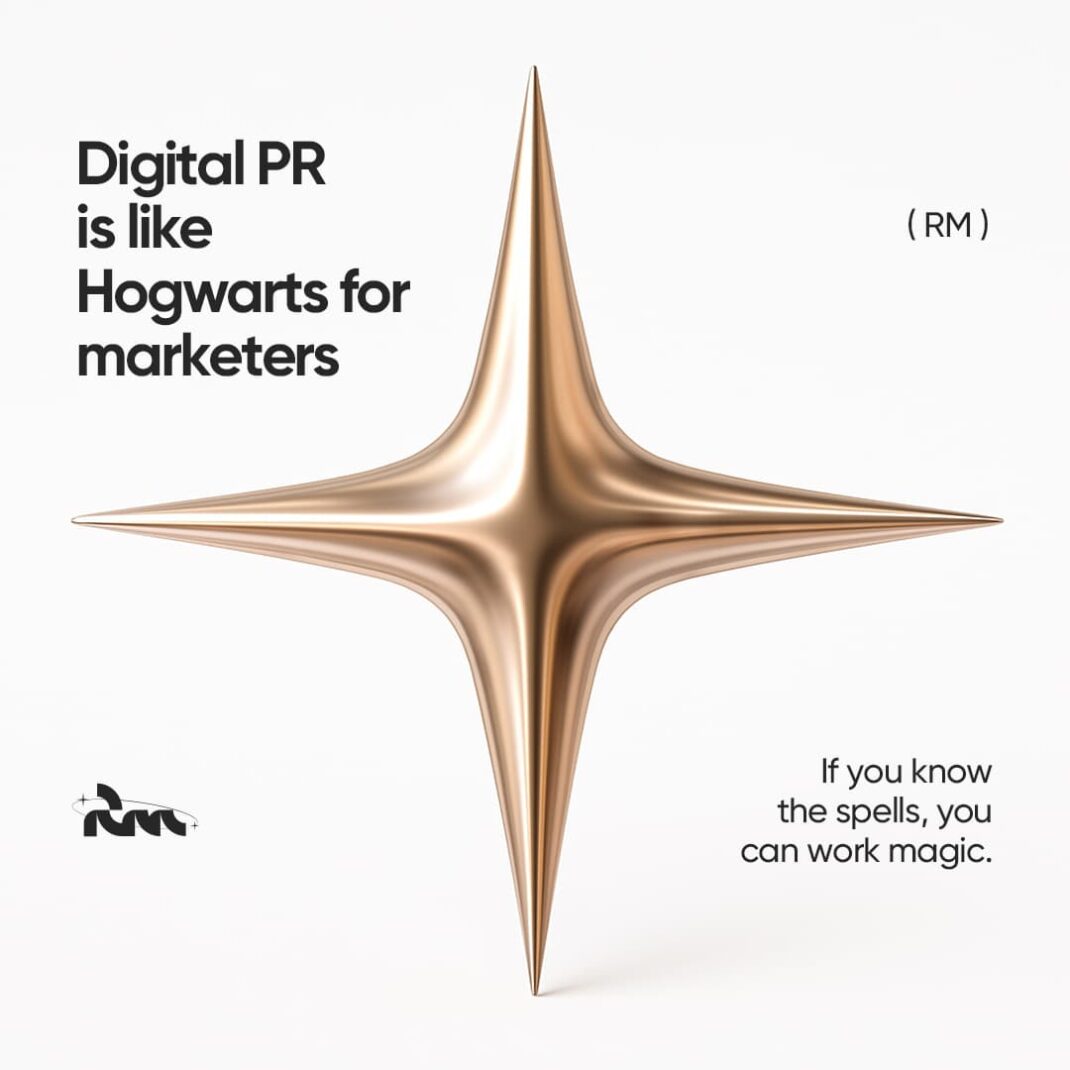The Digital PR Revolution: Why Industry Leaders Can’t Stop Talking About It

Something significant is happening in the marketing world. Across boardrooms and strategy sessions, one topic dominates conversations: digital PR. Why is everyone talking about digital PR now? The numbers tell a compelling story. According to recent data, searches for “digital PR” and related terms have surged by an unprecedented 160% year-over-year, jumping from 8,640 to over 22,460 monthly searches. This isn’t just another marketing buzzword—it’s a fundamental shift in how brands build visibility and authority in an increasingly competitive digital landscape.
This revolution isn’t happening in isolation. As traditional advertising effectiveness declines and organic reach becomes more challenging, industry leaders recognize that digital PR offers something different: the perfect blend of credibility, awareness, and SEO benefits that few other strategies can match. In this article, we’ll explore why digital PR has become the marketing strategy everyone can’t stop discussing, and why now might be the perfect time for your brand to embrace it.

What is Digital PR? The Evolution from Traditional PR
Digital PR represents the evolution of traditional PR tactics adapted for the online world. While traditional public relations focused primarily on print media, television, and radio to build brand reputation, digital PR expands this scope to include online publications, social media platforms, and influencers to generate brand awareness and valuable backlinks.
The fundamental difference is in the objectives. Traditional PR aims primarily to increase visibility and manage reputation. Digital PR accomplishes these goals while also serving as a robust SEO strategy, earning editorial links from high-authority websites that signal trust to search engines and improve rankings.
“Digital PR is like a magic wand in the world of brands. Even if no one knows about you, you can appear where you never dreamed with the right strategy – in respected media, industry publications, and search results. It’s like Hogwarts for marketers: if you know the spells, you can work miracles,” says Maria Kopiika, Head of Marketing at Real Media, an international agency.
James Morrison, founder of Digital Growth Agency, explains: “What makes digital PR so powerful is that it tackles multiple marketing challenges simultaneously. You’re building brand awareness, establishing thought leadership, and improving your search visibility all through the same activities.”
Unlike old-school link-building tactics focused on quantity over quality, digital PR prioritizes relevance and authority. It creates genuinely newsworthy content that publications actually want to cover. This approach builds sustainable organic growth that delivers results long after the initial campaign concludes.
The Dramatic Rise of Digital PR: Search Data Reveals the Trend
The statistics don’t lie—digital PR has experienced explosive growth in interest over the past year. This isn’t merely anecdotal; the data shows a clear and dramatic upward trajectory in searches and adoption.
Why Searches for “Digital PR” Have Exploded by 160%
The recent surge in searches for digital PR reflects a perfect storm of market conditions. As algorithms become more sophisticated and content marketing increasingly competitive, brands search for strategies that cut through the noise.
Digital marketing veteran Samantha Roberts says, “The days of quick SEO fixes are over. Google’s algorithm updates have consistently rewarded sites with natural, high-quality referring domains. Digital PR is the most effective way to earn these valuable signals.”
Additionally, the pandemic accelerated digital transformation across industries, forcing businesses to reconsider their marketing mix. With physical events canceled and face-to-face networking limited, companies redirected budgets toward digital channels, discovering the measurable advantages of digital PR campaigns compared to traditional approaches.
The accessibility of performance metrics has also played a crucial role. Unlike traditional PR, where success was often measured through nebulous “brand lift” indicators, digital PR delivers concrete, measurable results: backlinks gained, referring domains added, improvements in keyword rankings, and increases in organic traffic. This accountability makes it easier for marketing directors to justify budget allocation.
Why Digital PR Has Become Essential in 2025
The digital landscape has evolved dramatically in recent years, creating new imperatives for brands seeking to maintain and grow their online presence. Several key factors have elevated digital PR from a nice-to-have tactic to an essential component of any comprehensive marketing strategy.
The AI Revolution: How ChatGPT and Other Tools Are Changing Discovery
Perhaps the most significant shift has been the rise of AI-powered discovery. Tools like ChatGPT, Claude, and Google Gemini don’t simply list search results—they generate answers based on sources they deem credible. This fundamental change in information discovery means brands need to be mentioned in trusted publications across the web.
“If you’re not in the story, you’re invisible,” explains Josh Daniels, founder of a leading digital PR agency. “What’s said about your brand—and where it’s said—directly influences your visibility across Google and AI-driven platforms.”
This represents a seismic shift in digital marketing. Traditional SEO techniques focused on optimizing your own website, but AI-driven search pulls information from across the web. Being mentioned and linked from authoritative publications is no longer just beneficial—it’s becoming essential for visibility.
The Link Between Digital PR and SEO Success
Industry research and expert commentary have increasingly validated the connection between digital PR and SEO success. Google’s John Mueller notably highlighted how digital PR is “just as critical as technical SEO,” acknowledging its fundamental role in building site authority.
This makes intuitive sense when considering Google’s core mission: delivering trustworthy, relevant results to users. When reputable publications link to your website, they’re essentially vouching for your credibility—a powerful signal that Google’s algorithms interpret as a vote of confidence.
Effective digital PR strategies earn links that:
- Come from relevant industry publications that your target audience actually reads
- Appear within content that positions you as an authoritative voice
- Generate direct click-through traffic beyond just SEO value
- Contribute to building topical authority in your niche
The most successful brands recognize that digital PR doesn’t replace technical SEO or content optimization—it complements these efforts, creating a more comprehensive digital strategy that addresses both on-page and off-page factors.
Core Components of Effective Digital PR Strategies

Understanding what makes digital PR work is crucial for brands looking to implement successful campaigns. While approaches vary, certain fundamental elements consistently appear in high-performing digital PR initiatives.
Creating Relevant, Shareable Content
At the heart of effective digital PR lies content that serves a dual purpose: providing genuine value to publications and their readers while naturally incorporating brand messaging. The days of thinly-veiled promotional content are long gone.
Today’s most successful digital PR campaigns typically feature:
Data-driven insights that reveal new trends or patterns. Original research that illuminates industry challenges or opportunities, Expert commentary on breaking news (reactive PR), and Creative assets that visualize complex information in accessible ways
“The secret to shareable content isn’t how promotional it is—it’s how useful, interesting, or surprising it is,” notes content strategist Emma Watkins. “Publications want content that their readers will engage with and share. Your brand benefits by association.”
It is critical that your content is relevant to both your business objectives and the publication’s audience. Strategic digital PR aligns these interests, creating stories that publications want to cover and that simultaneously position your brand advantageously.
Building Relationships with Online Publications
While compelling content is essential, relationships remain the foundation of successful digital PR. Cultivating connections with journalists, editors, and content managers at target publications increases the likelihood of coverage and links.
This relationship-building process involves understanding what specific publications and writers need. Different outlets have different editorial priorities, content formats, and audience expectations. Tailoring outreach to these requirements dramatically improves results.
Digital PR specialist Thomas Chen explains: “Many brands make the mistake of creating content first, then looking for places to pitch it. The more effective approach is understanding what specific publications want, then creating content that meets those needs while advancing your brand messaging.”
Successful relationship building requires consistency, reliability, and a genuine interest in helping publications create value for their audiences rather than just extracting value for your brand.
Measuring Digital PR Success: Beyond Just Backlinks
While backlinks remain a central benefit of digital PR, sophisticated practitioners measure success across multiple dimensions. This comprehensive approach to measurement better captures the full value digital PR delivers.
Key Metrics Industry Leaders Track
Industry leaders evaluate digital PR performance using metrics that span brand awareness, authority building, and direct business impact:
Link quality metrics include domain authority scores and relevance to your industry, the context in which links appear, and whether they drive referral traffic.
Brand awareness indicators such as mentions across publications, social shares, and increases in branded search volume help quantify visibility improvements.
SEO performance metrics track improvements in keyword rankings, particularly for competitive terms, along with growth in organic traffic and conversions from organic search.
Meaningful business outcomes including lead generation, conversion rates from PR-driven traffic, and direct sales can establish clear ROI for digital PR activities.
“The most sophisticated brands are moving beyond counting links to understanding the quality and impact of their digital PR,” notes analytics expert Sarah Johnson. “They’re asking: did this campaign move the needle on business objectives, not just SEO metrics?”
This multidimensional approach to measurement allows brands to refine and optimize their digital PR strategies over time, focusing resources on activities that deliver meaningful business impact.
The Future of Digital PR: Where the Industry is Heading
As digital PR continues to evolve, several emerging trends point to where the discipline is heading in the coming years. Understanding these developments can help brands stay ahead of the curve.
The integration of digital PR with other marketing disciplines is accelerating. Forward-thinking brands are breaking down silos between PR, content marketing, social media, and SEO teams, creating unified strategies that leverage content across multiple channels.
AI tools are transforming research and outreach capabilities, helping PR professionals identify trending topics, optimize pitch timing, and personalize communications at scale. However, the human elements of creativity and relationship building remain irreplaceable.
The definition of “publications” continues to expand beyond traditional media to include podcasts, newsletters, online communities, and other platforms where audiences gather. This broadening landscape creates new opportunities for media coverage and link acquisition.
Matthew Parker, digital futurist, observes: “We’re seeing a convergence of earned, owned, and even paid media strategies. The most effective digital PR campaigns now leverage multiple channels, with each component reinforcing the others.”
This evolution means digital PR practitioners need broader skill sets than ever, combining journalism instincts, data analysis capabilities, SEO knowledge, and genuine relationship-building talents.
Key Takeaways: Why You Can’t Ignore Digital PR in Your Marketing Strategy
As explored throughout this article, digital PR has evolved from a complementary tactic to an essential component of modern marketing strategies. Its dramatic rise in popularity stems from its unique ability to address multiple marketing objectives simultaneously.
The growing dominance of AI in information discovery makes being mentioned in authoritative sources increasingly crucial for visibility. Brands absent from these conversations risk becoming invisible to potential customers.
Digital PR delivers measurable, sustainable results beyond temporary traffic spikes. The authority and credibility built through strategic media placements create a foundation for long-term organic growth.
The landscape continues evolving, with the line between traditional marketing disciplines blurring. Tomorrow’s most successful brands will be those that adapt quickly, integrating digital PR into comprehensive strategies that span the entire customer journey.
As industry veteran Daniel Morgan succinctly puts it: “In today’s digital ecosystem, what others say about you matters more than what you say about yourself. Digital PR isn’t just another marketing tactic—it’s how modern brands build the authority and trust needed to thrive.”
For businesses looking to stay competitive in 2025 and beyond, embracing digital PR isn’t optional—it’s imperative. The revolution is here, and industry leaders can’t stop talking about it because it’s fundamentally changing how brands win in the digital age.


Recent Comments